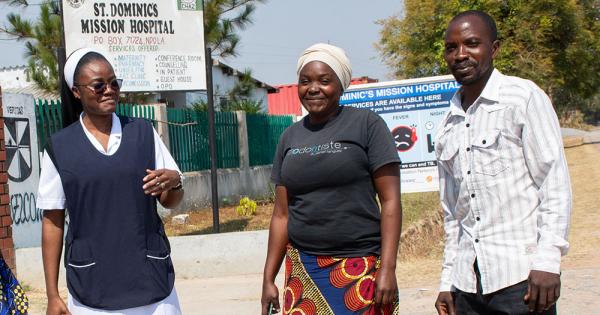Argentine President vetoed social welfare laws – Prensa Latina – Latin American News Agency

Presidential Vetoes in Argentina Impact Progress on Sustainable Development Goals
Executive Action on Social Legislation
The Argentinian executive branch, led by President Milei, has enacted a total veto on three key social welfare initiatives previously sanctioned by the Senate on July 10. The vetoes, set to be published in the Official Gazette on Monday, halt legislation aimed at expanding the nation’s social safety net. The administration is reportedly working to secure the support of at least one-third of legislators to prevent a potential override by the opposition.
Vetoed Initiatives and Stated Rationale
The presidential vetoes target the following legislative measures:
- An increase in the number of pensioners.
- The continuation of the national pension moratorium.
- The establishment of new benefits for families with persons with disabilities.
The official justification for this action cites concerns over a negative impact on the fiscal balance and an alleged lack of financing sources. This rationale is presented alongside a concurrent policy decision to grant significant tax reductions on exports to the agricultural sector.
Direct Implications for Sustainable Development Goals (SDGs)
The decision to veto this social legislation presents significant setbacks to Argentina’s commitment to the United Nations’ 2030 Agenda for Sustainable Development. The impact is most pronounced in the following areas:
- SDG 1: No Poverty – The vetoes directly undermine social protection systems for the elderly by halting an increase in pensioners and ending the pension moratorium. These measures are critical for preventing and alleviating poverty among one of the most vulnerable demographics.
- SDG 10: Reduced Inequalities – By denying expanded benefits to pensioners and families with disabled members while providing tax cuts to affluent sectors, the action exacerbates income and social inequality. This runs contrary to the core principle of SDG 10, which is to reduce inequality within and among countries.
- SDG 3: Good Health and Well-being – The cancellation of new benefits for families with disabled individuals jeopardizes the well-being and access to essential support and care for persons with disabilities, directly impacting targets within SDG 3.
Legislative and Political Context
The future of the vetoed laws now rests with the legislative branch. The opposition must secure a two-thirds majority in the Chamber of Deputies to override the presidential vetoes. While the initiatives passed the Senate with a large majority, the executive branch is confident it can rally sufficient support in the lower house to sustain the vetoes. This political confrontation is intensified by the approaching campaign season for the national congressional elections scheduled for October 26.
SDGs Addressed in the Article
- SDG 1: No Poverty
- SDG 10: Reduced Inequalities
- SDG 3: Good Health and Well-being
Specific SDG Targets Identified
-
SDG 1: No Poverty
- Target 1.3: Implement nationally appropriate social protection systems and measures for all, including floors, and by 2030 achieve substantial coverage of the poor and the vulnerable.
Explanation: The article discusses the presidential veto of three laws aimed at providing “necessary social assistance.” These laws, which include increasing the number of pensioners, continuing a pension moratorium, and providing new benefits for families with disabled people, are direct examples of social protection systems. The veto directly impacts the implementation and coverage of these systems for vulnerable groups like the elderly and persons with disabilities.
- Target 1.3: Implement nationally appropriate social protection systems and measures for all, including floors, and by 2030 achieve substantial coverage of the poor and the vulnerable.
-
SDG 10: Reduced Inequalities
- Target 10.2: By 2030, empower and promote the social, economic and political inclusion of all, irrespective of age, … disability, … or other status.
Explanation: The vetoed initiatives were specifically designed to support pensioners (inclusion irrespective of age) and families with disabled people (inclusion irrespective of disability). By blocking these benefits, the government’s action works against the social and economic inclusion of these specific demographic groups. - Target 10.4: Adopt policies, especially fiscal, wage and social protection policies, and progressively achieve greater equality.
Explanation: The article highlights a stark contrast in fiscal policy. The government vetoes social protection measures for the vulnerable, citing a “negative impact on fiscal balance,” while simultaneously granting “a multimillion-dollar tax cut on their exports” to “the oligarchs of Argentine agriculture.” This decision-making process directly relates to fiscal and social protection policies and their impact on inequality.
- Target 10.2: By 2030, empower and promote the social, economic and political inclusion of all, irrespective of age, … disability, … or other status.
-
SDG 3: Good Health and Well-being
- Target 3.8: Achieve universal health coverage, including financial risk protection…
Explanation: While not explicitly about healthcare services, the “new benefits for families with disabled people” and pensions for the elderly are forms of financial risk protection. Economic stability is a key determinant of health and well-being, and these social safety nets help prevent vulnerable individuals from falling into poverty due to age or disability, which in turn protects their ability to access necessary care and maintain their health.
- Target 3.8: Achieve universal health coverage, including financial risk protection…
Implied Indicators for Measuring Progress
-
For Target 1.3
- Indicator 1.3.1: Proportion of population covered by social protection floors/systems, by sex, distinguishing… older persons, persons with disabilities…
Explanation: The article implies this indicator by discussing laws that would “increase in the number of pensioners” and provide “new benefits for families with disabled people.” The success or failure of these laws directly affects the proportion of older persons and persons with disabilities covered by the national social protection system. The veto represents a negative change in this indicator.
- Indicator 1.3.1: Proportion of population covered by social protection floors/systems, by sex, distinguishing… older persons, persons with disabilities…
-
For Target 10.4
- Implicit Indicator: Allocation of fiscal resources towards social protection versus other expenditures.
Explanation: The article does not name a formal indicator, but it provides the data points for one. It contrasts the rejection of social spending due to “fiscal balance” concerns with the approval of a “multimillion-dollar tax cut” for agricultural exporters. An analysis of the national budget, comparing the amount of money allocated to social programs versus tax cuts for wealthy sectors, would serve as a direct measure of whether fiscal policy is being used to achieve greater equality.
- Implicit Indicator: Allocation of fiscal resources towards social protection versus other expenditures.
Summary of SDGs, Targets, and Indicators
| SDGs | Targets | Indicators (Mentioned or Implied) |
|---|---|---|
| SDG 1: No Poverty | 1.3: Implement nationally appropriate social protection systems and measures for all, including floors, and by 2030 achieve substantial coverage of the poor and the vulnerable. | 1.3.1: The number and proportion of pensioners and persons with disabilities receiving social benefits. The article refers to an “increase in the number of pensioners” and “new benefits for families with disabled people.” |
| SDG 10: Reduced Inequalities | 10.2: By 2030, empower and promote the social, economic and political inclusion of all, irrespective of age, … disability…
10.4: Adopt policies, especially fiscal, wage and social protection policies, and progressively achieve greater equality. |
The existence of laws and benefits aimed at the elderly and persons with disabilities as a measure of inclusion.
Allocation of fiscal resources. The article contrasts vetoed social spending with a “multimillion-dollar tax cut” for agricultural exporters. |
| SDG 3: Good Health and Well-being | 3.8: Achieve universal health coverage, including financial risk protection… | The provision of pensions and disability benefits as a measure of financial risk protection for vulnerable groups. |
Source: plenglish.com

What is Your Reaction?
 Like
0
Like
0
 Dislike
0
Dislike
0
 Love
0
Love
0
 Funny
0
Funny
0
 Angry
0
Angry
0
 Sad
0
Sad
0
 Wow
0
Wow
0















































































